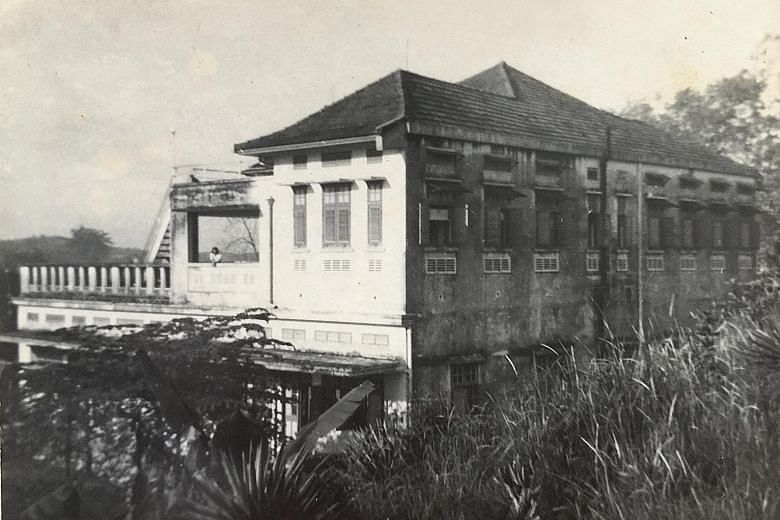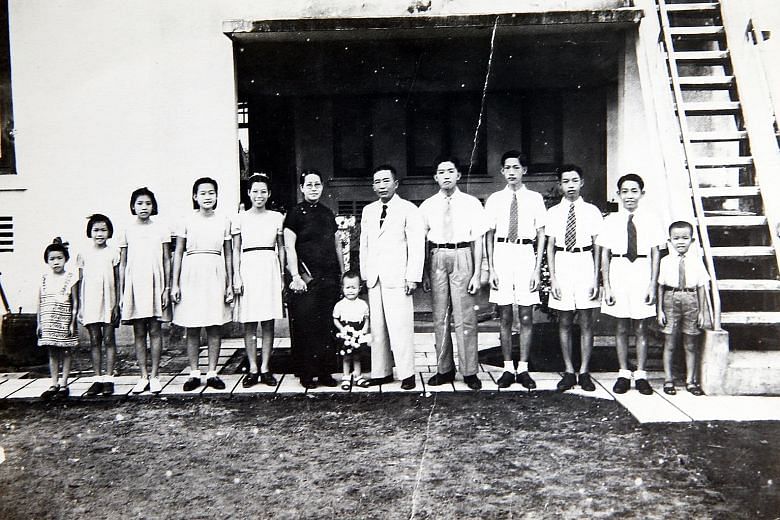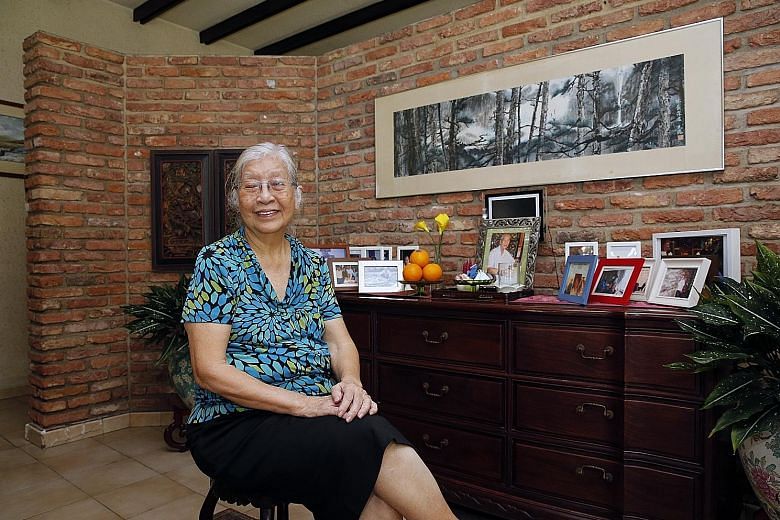At 83, Madam Si-Hoe Sing Sow published her first book.
Casting her mind back to her distant childhood, she remembered the houses her father had built.
Mr Si-Hoe Tuck had been the contractor behind the famed peony villa for the Aw brothers, who founded the Haw Par Villa theme park, and he built from scratch the first two houses she had lived in.
The first of these, a wooden house in Palmer Road where her family of 13 lived in the 1930s, was the site of an idyllic childhood of frog-hunting and guava-picking.
The second, a concrete house in Silat Road, was a house of secrets.
Built in preparation for World War II, it had false ceilings and hidden compartments. It was the house in which she watched the Japanese terrorise her family, and saw fire rain from the sky as the Allied forces bombed Singapore.

The retired chemistry teacher published her first children's book, The House On Palmer Road, together with her daughter, food and travel writer Sim Ee Waun, 49, earlier this year. A second book, based on her memories of the Silat Road house, is in the works.
"After my retirement, I didn't have much to do," says the mother of three, who lost her husband to Parkinson's disease in 2010.
"My granddaughter asked me what I used to do when I was her age, and that got me scribbling.
"I would like younger generations to know more about how we lived at that time."
She was the seventh of 11 children, who slept three to a plank bed in a single room at the Palmer Road house. In the wasteland that would later become part of Tanjong Pagar in the Central Business District, she ran amok with her brothers and sisters, climbing trees and fleeing the fierce geese that were used to guard the godown gates.
Though the house was a tight fit for them, their parents and domestic helper, her father was proud of how it was ahead of its time in some aspects. For instance, it had a brick and cement outhouse, unlike the makeshift zinc-roof toilets that other households had.

The family moved to the Silat Road house shortly before the war started, when the old wooden house became too cramped to hold them all.
Madam Si-Hoe's father, who was involved in the Kuomintang's efforts to raise funds and awareness for the war in China, knew he would be targeted when the Japanese took over Singapore, and built secret storage spaces into the house.
They hid food in the false ceiling because they were afraid looters might steal it.
"We went from having a lot to having nothing at all," she says. "We were used to having bread, jam and rice any time we liked and then, suddenly, we couldn't have these any more."
She recalls the night the Japanese came for her father.
"They came in without knocking, with guns and ropes and searched the house. I was so frightened."
"My father had enough time to run out through the back and into the rubber plantations, where he sought refuge from a Siamese temple nearby. The monks hid him under the bed through the night."
Though her father survived that night, the final days of the war proved another nightmare, as Allied bombers rained incendiary bombs onto the island.
The family had an air-raid shelter, a converted garage into which they had to fit more than 30 people, including their neighbours.
"We would pray that we would hear the bomb land, because if you didn't hear it, then that was the end of it for you," she said.
She recalls how she hid under the staircase during one air raid because it was too late to get to the shelter. There was a bomb smouldering just metres away from her.
"My father dragged me out of the house onto the road. I had to jump over the bomb. He said to run - but run where? There was nowhere - only a muddy ditch by the road. We got into it, with nothing over our heads to protect us.
"All around us, the attap houses were burning. Luckily our house was concrete, but whatever inside that could burn, burned away.
"I looked up at the sky. All I could see was smoke, sun, burning."
Madam Si-Hoe would grow up to carve her own path, becoming one of a handful of women in her day to study at the University of Malaya and - even rarer - to pursue a master's degree in chemistry.
She would perform experiments with toxic chemicals such as sodium cyanide. "I would try to do them when nobody else was in the laboratory, so I didn't kill anyone else," she quips.

She taught science at schools such as St Patrick's School, Anglo-Chinese School and Temasek Junior College, where she also became vice-principal. She retired in 1994 when she turned 60.
She devotes her golden years to reading, gardening, tutoring her grandchildren in chemistry and, now, her new career as a writer.
She and Ms Sim will be giving a talk about The House On Palmer Road next Saturday at 2pm in Books Kinokuniya in Ngee Ann City.
Memories of the war still haunt her, however. "When I hear the siren on Total Defence Day, it brings the fear back. I don't go to war museums or watch war films - it's too much for me.
"The trouble is, it is very hard for you all to imagine what it was like because the difference is so stark.
"How can I describe what it feels like to not know if you have enough rice to last the month, to not be sure if you can even get water?
"But I too had happy days. Those memories are very precious to me."

